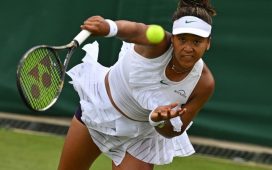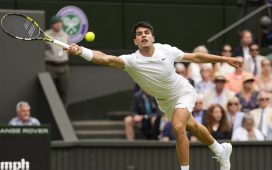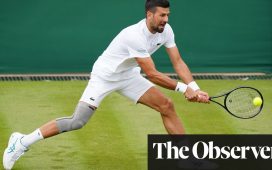In tennis, there has always been the stereotypical image of the traditional grass-court player: moderately tall and lanky, with a big booming first serve, an intelligent second serve, a sound volley, a good slice and a decent overall game.
Since the turn of the millennium, though, a distorting distance has developed between this image and the reality. As the lawns at Wimbledon — the place where grass-court tennis finds its greatest exposition — changed hue and racquet-and-string technology improved, consummate all-courters have ruled the roost.
In the 21 editions from 2002 to 2023, Novak Djokovic has won seven times, Andy Murray and Rafael Nadal twice each, and Lleyton Hewitt and Carlos Alcaraz once. Even the great Roger Federer, who appeared every bit the quintessential grass genius when he won the first of his eight titles in 2003, moved away and held on to only a few of the basic tenets.
Reclaiming space
In the last five years however, there has been one man who has tried — and been fairly successful at — upsetting the apple cart and reclaiming the place for his ilk — Matteo Berrettini.
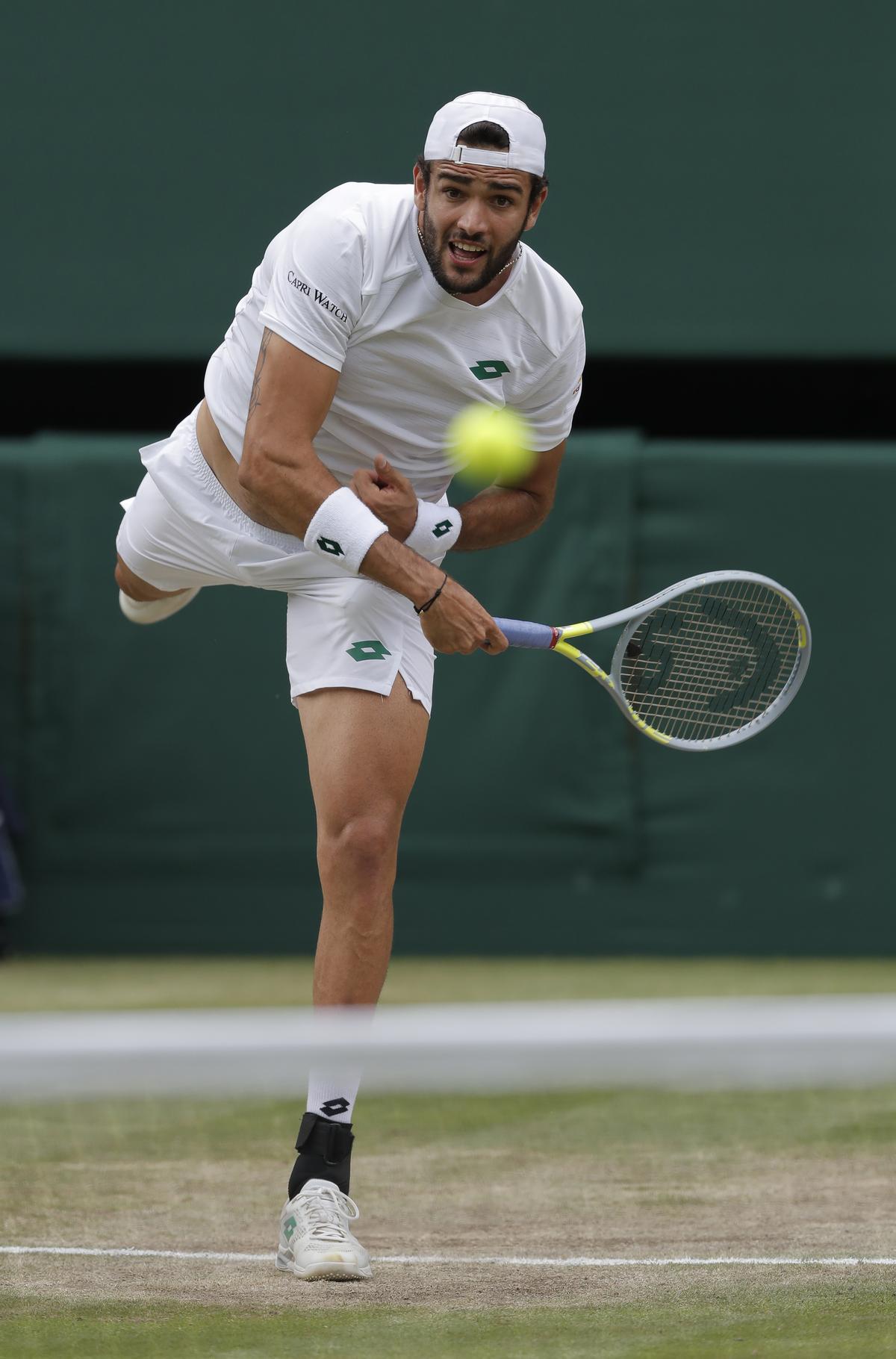
Setting the agenda: Most times, when Berrettini lands his first serve, it’s either unreturnable or draws an easy putaway. | Photo credit: Getty Images
The 6’5” Italian possesses a monstrous first serve, a second serve that hisses and rears, a crushing forehand, a reasonable volley, an effective slice and a solid backhand. And with these tools, he has won four of the 11 grass-court events he has entered starting Stuttgart 2019, finished a finalist twice — including 2021 Wimbledon — and semifinalist once. Four is half the number of titles he has won all career.
Berrettini has made at least one grass final in four of the five seasons since 2019 (with Covid washing out 2020). With the grass swing lasting just three weeks between the end of the French Open and the start of Wimbledon, replicating success year on year is remarkably tough. What also makes the 28-year-old’s achievement noteworthy is the fact that no other man, other than Djokovic, has won more than two grass titles in this period.
Through his career, one of the biggest points of difference between Berrettini and the rest has been his serve. Most times, when he lands his first serve, it’s either an unreturnable or it sets up a second shot that is an easy putaway. On the second serve, he imparts so much spin that it locks the returner into awkward positions, making it harder to find angles.
On grass, such traits have outsized consequences, for the ball, on average, travels faster than elsewhere. In May 2018, in an article in the International Journal of Performance Analysis in Sport, five researchers, Frantisek Vaverka, Jan Hendl, Jiri Nykodym, Zhanel Jiri and David Zahradnik, compared data sets from 2008, 2012 and 2016 and concluded that players at Wimbledon “mostly strive to obtain a higher speed of the first serve during the match relative to playing at the other Grand Slam tournaments”.
It wouldn’t be a stretch to extrapolate this to the 2020s, for it is now fairly established that players in the current era are hitting with unseen levels of power and Berrettini is one of the best practitioners of that. On grass, where the ball bounces lower and manages to retain more of its speed than on other surfaces, it is doubly difficult to play someone like Berrettini, for it shortens the time a returner has and often hurries them into shots.
A comparison between his overall career statistics vis-a-vis grass lays bare this fact. On grass, he serves more aces (15.4% vs. 11.6%), wins a bigger percentage of first-serve (80.6% vs. 77.7%) and second-serve points (54.7% vs. 53.6%) and holds better (91% to 87.7%). His Dominance Ratio — % of return points won divided by % of serve points lost — is also higher (1.2 vs. 1.13).
More egalitarian grass
Why then has Berrettini not been able to crack the code at Wimbledon? He did hold his own for a set and a half against Djokovic in the 2021 final before withering away. The reason could well be — as seen from the number of titles the likes of Djokovic, Nadal and Murray have won — that the grass court of today — slower and bouncier than before — offers a wider variety of players chances at excelling.
This is also the golden age of returners, and on the slick lawns, Djokovic, Murray and more recently Alcaraz have counted on bespoke skills to blunt murderous power. They have used an abbreviated forehand technique so as to not feel rushed. They also use a mixture of blocked and sliced returns to either send the ball deep or reset the point. Though they may not be ace masters, spot-serving is now a necessary skill and no one is as proficient at this as Djokovic.
Another aspect in which players are getting better is movement. Among the hardest things to accomplish when the tennis caravan shifts from clay to grass is the transition that happens “under the feet”, according to Vijay Amritraj. When pushed wide on clay or a hard court, modern-day players invariably slide. The stance is open and they plant their leg in one big leap, make contact with the ball while stopping their slide and quickly recover to the centre.
This is not an option on grass during the first week of Wimbledon when the courts are still slippery. Once the shot is executed, the player has to decelerate with smaller steps, turn and accelerate again. The more efficient the player is at this facet, the quicker he or she will be in getting to the next ball.
Last year, American Christopher Eubanks, who won the Wimbledon tune-up in Mallorca and made a rousing run to the quarterfinals at SW19, revealed on social media an interesting exchange he had had with Belgian Kim Clijsters wherein he said that he needed 17 steps to change direction out of the corners.
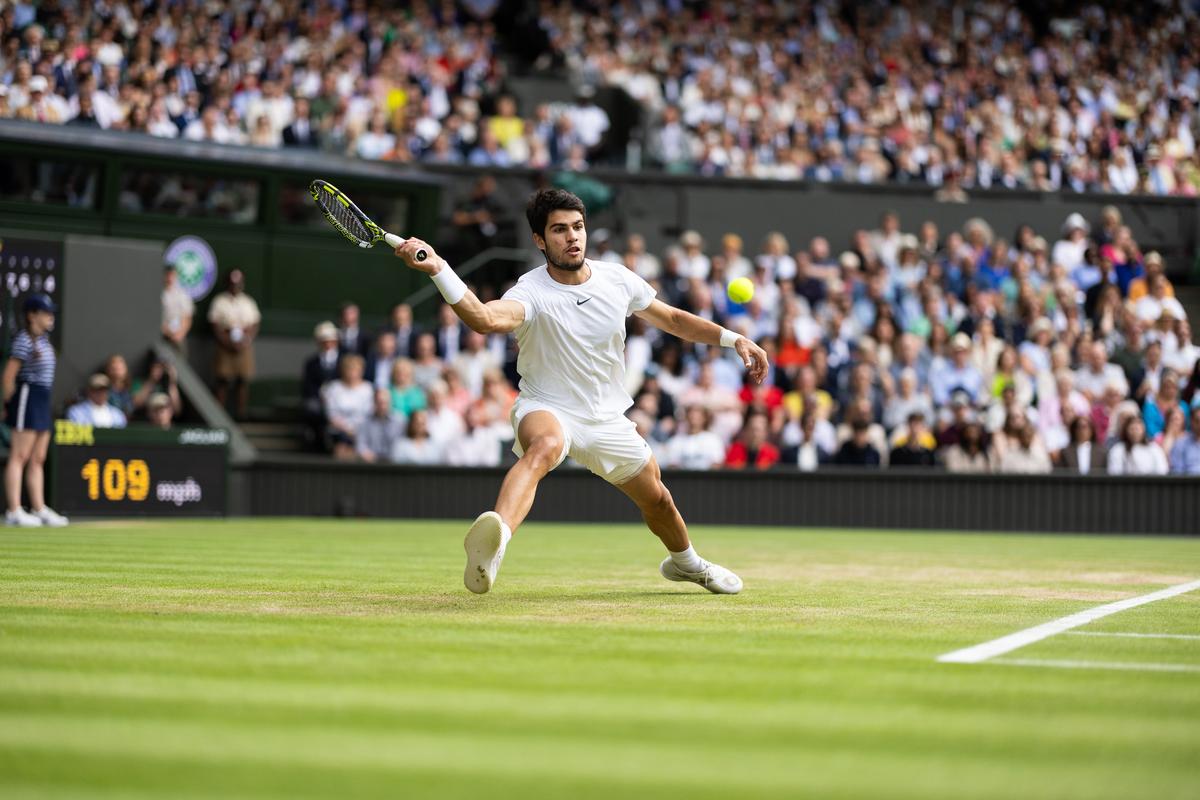
Finding a neutraliser: The likes of Carlos Alcaraz have devised a way to stretch and slide on grass, extending rallies and reducing the advantage of first-strike tennis. | Photo credit: Getty Images
In fact, Pete Sampras expanded this grass-court technique to his play across surfaces. However, in what is perhaps an indication of how play on grass has evolved, Djokovic and the rest have now found a way to slide and stretch on the hallowed green fields, more so in the second week when the area around the baseline is bone dry.
When Wimbledon starts on Monday, one of the questions will be whether Berrettini can refine his adept grass-court game and successfully quell the challenge from the maverick all-courters. But he is unseeded and ranked 60 in the world, and has suffered debilitating wrist and ankle injuries over the past two seasons.
Thinner draw
He did, however, show glimpses of his best form by reaching the final in Stuttgart two weeks ago. It helps that there is no Federer and Nadal, and that the 37-year-olds, Djokovic and Murray, are just about recovering from knee and back surgeries respectively.
There is defending champion Alcaraz and Italian top seed Jannik Sinner, fresh off his title in Halle. Sinner has reached the semifinals and quarterfinals the last two years and only lost to Djokovic both times. The 22-year-old is drawn to meet Berrettini in the second round.
But there is still an unmistakable feeling that this is one of the most open draws at Wimbledon in recent times. Can Berrettini make it count?


